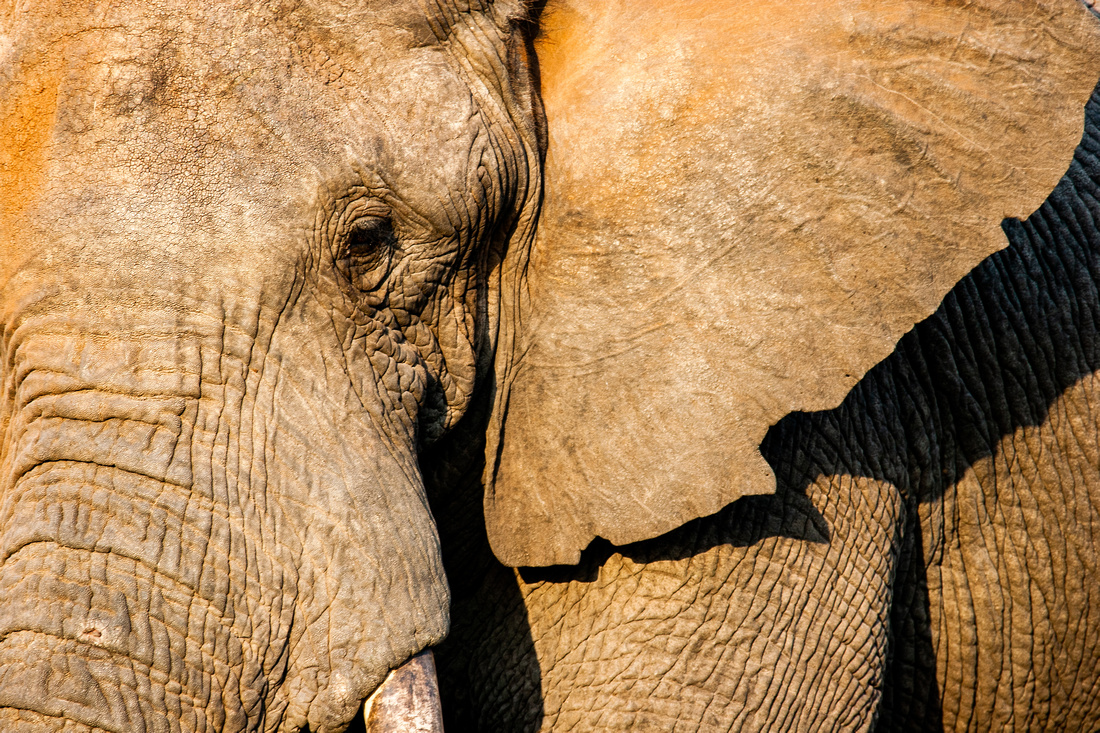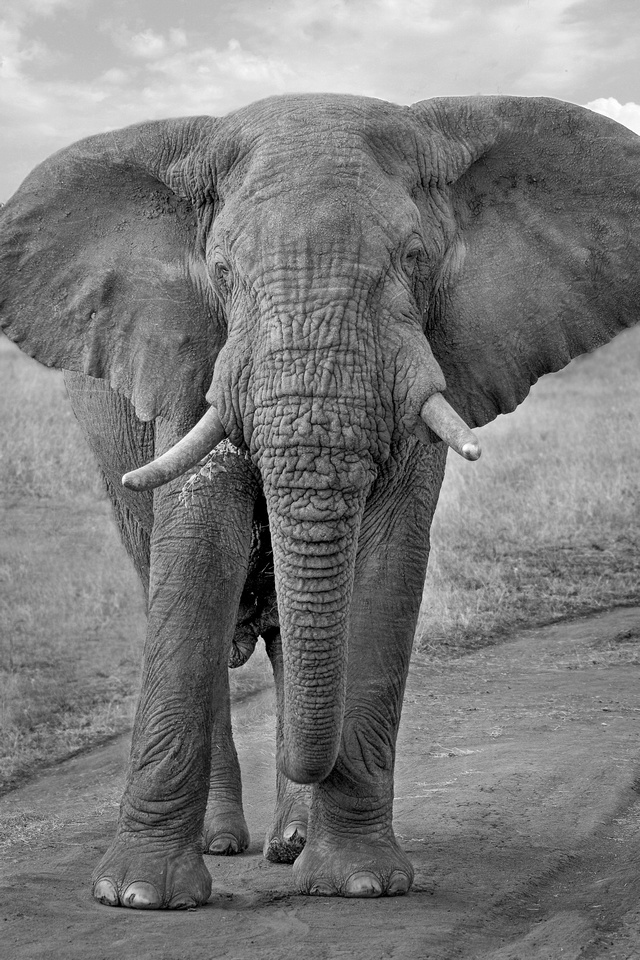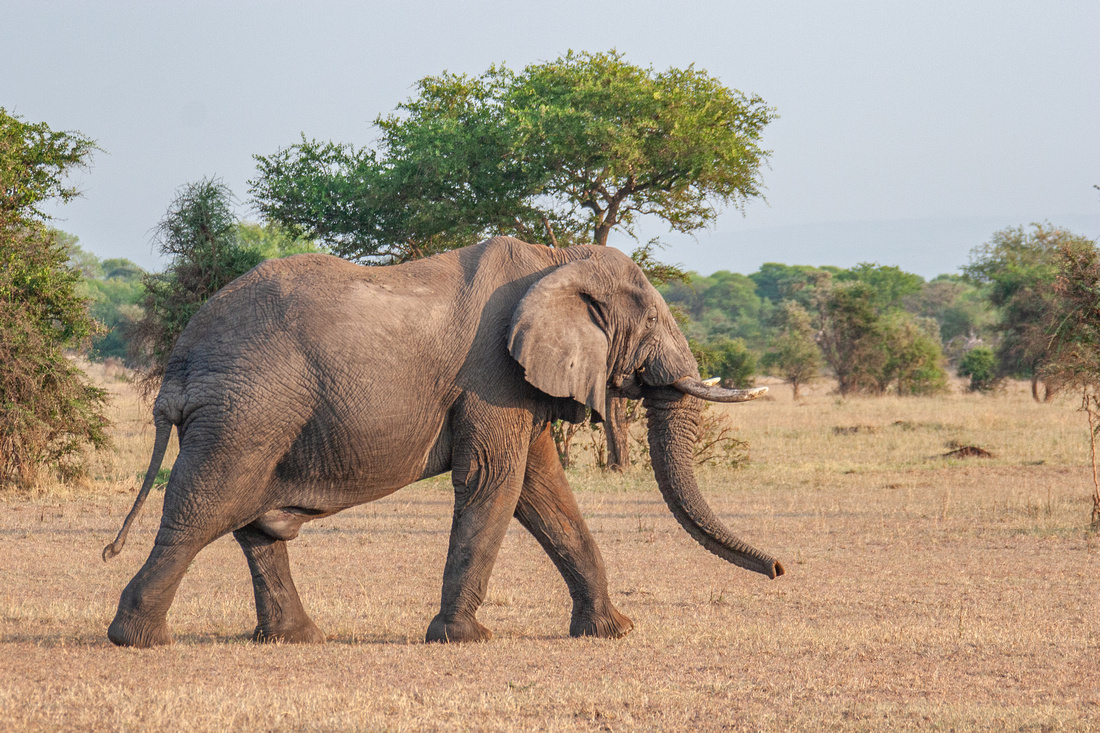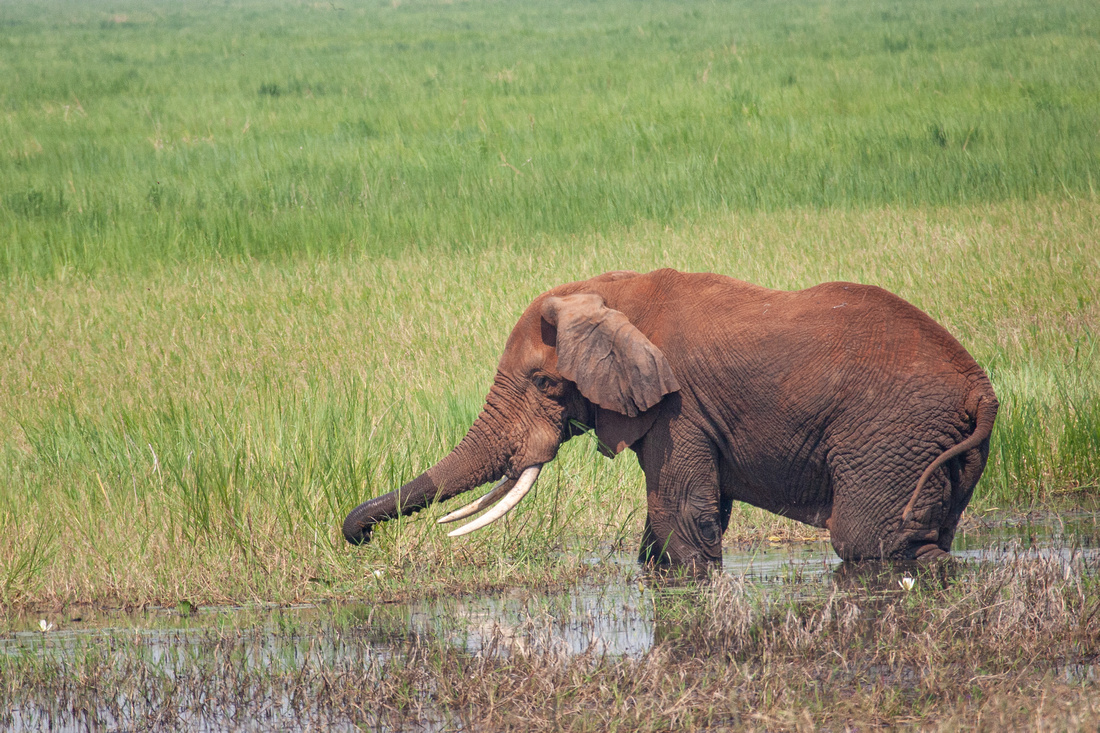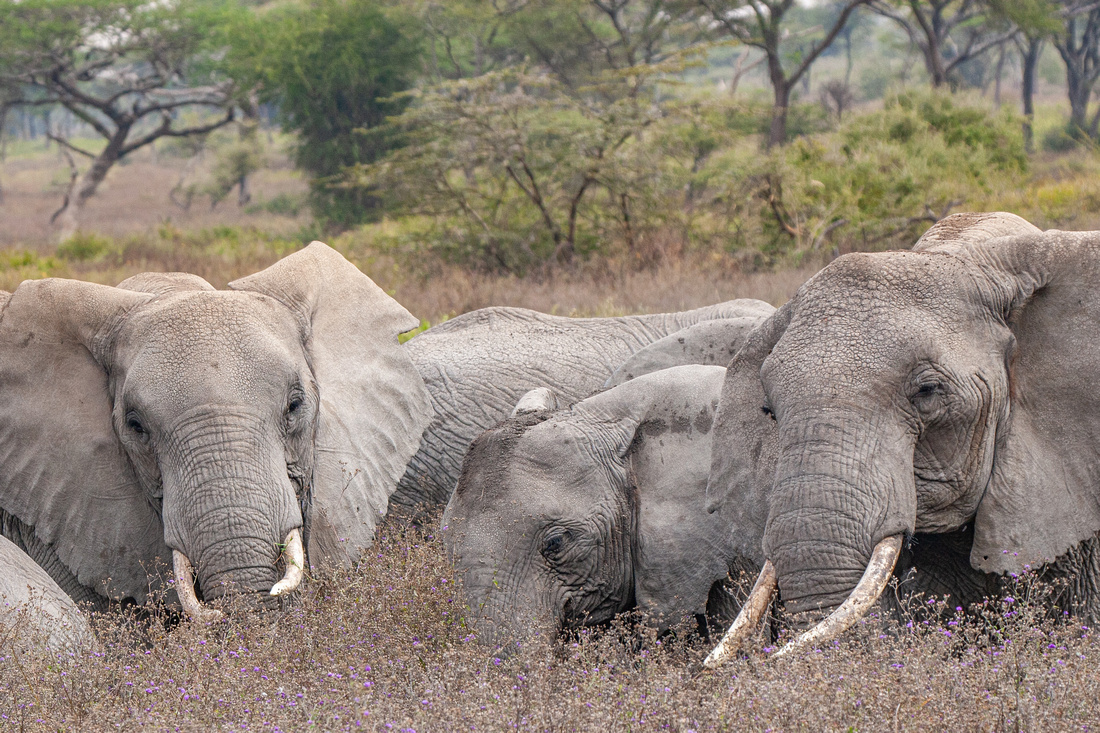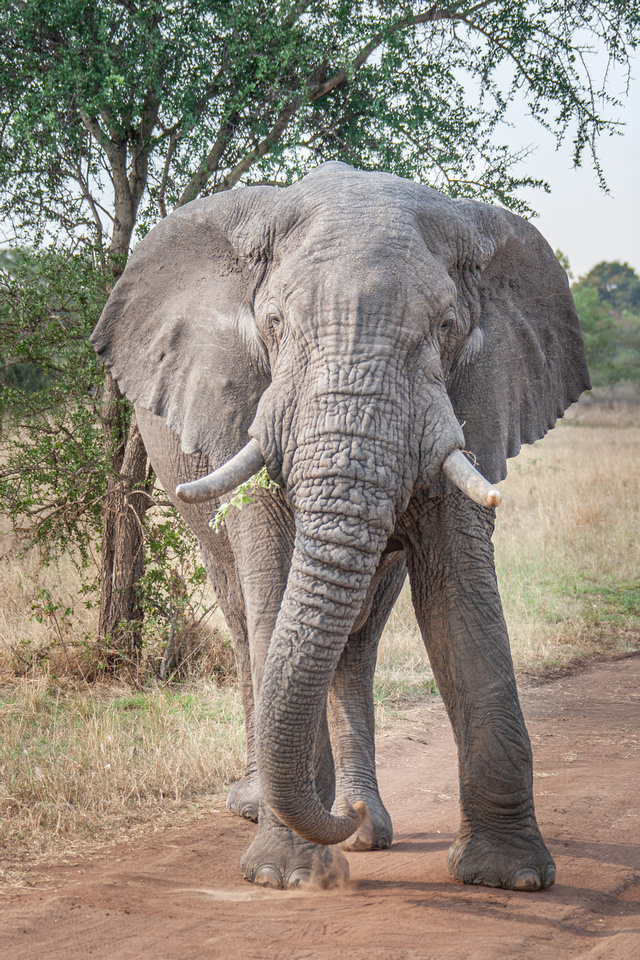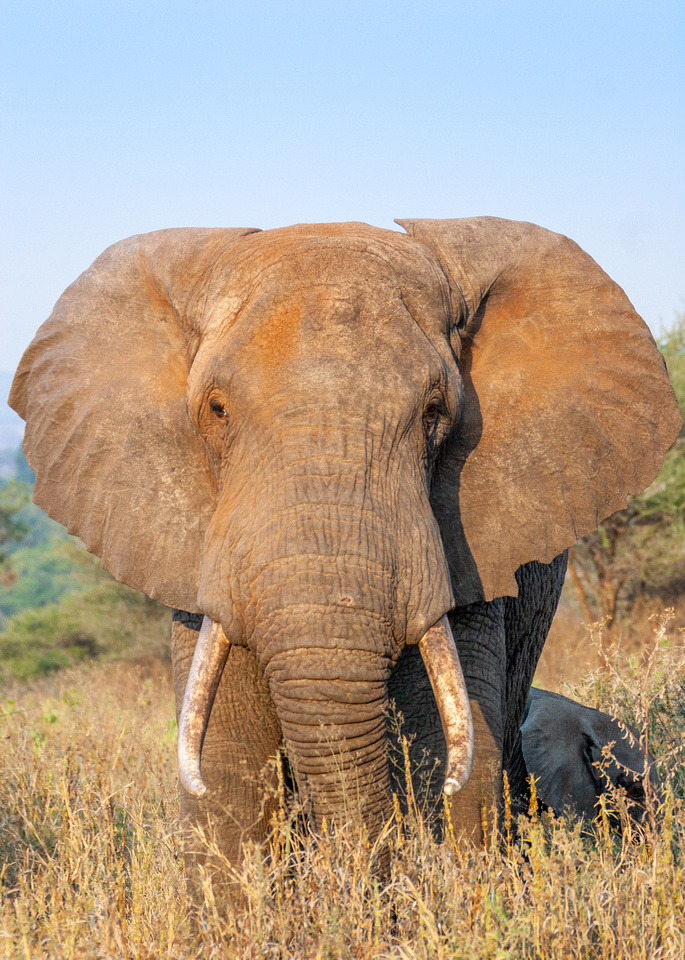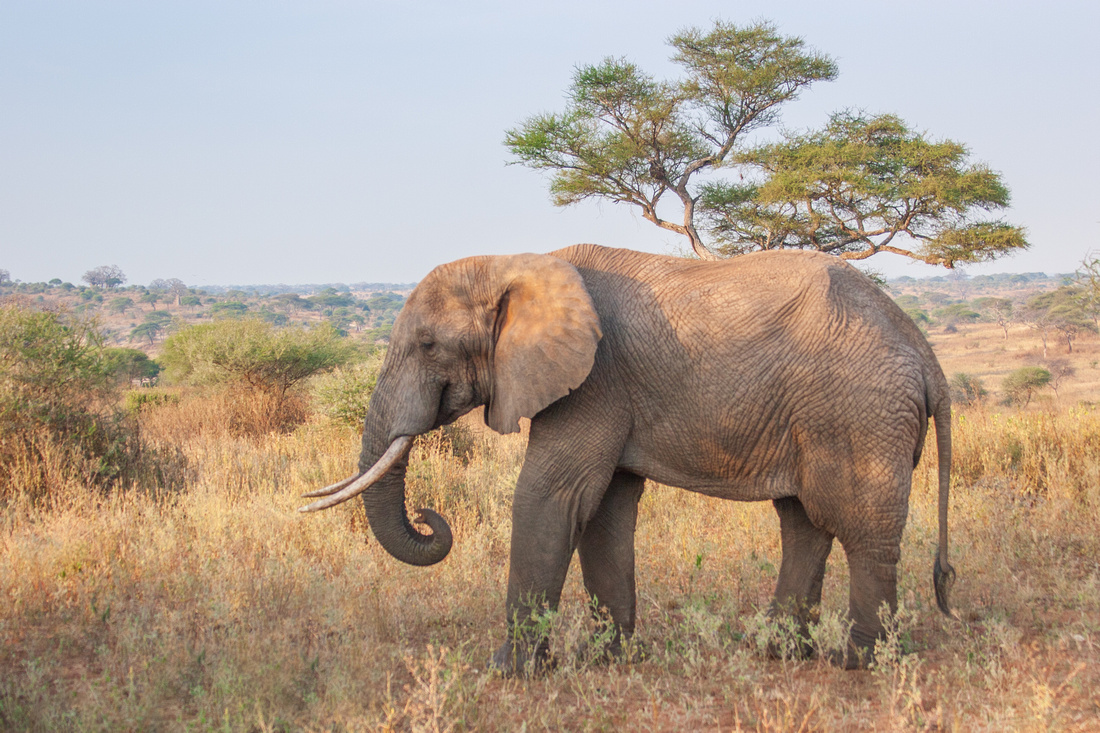Species Highlight: African Elephant
Species Highlight: African Elephant
Text and photos by Heather Cline
Introduction
I have been fortunate to have two opportunities to see African Elephants in their natural habitats and both were experiences I will never forget. There are three recognized elephant species: Asian, African savannah and African forest. I am going to cover African savannah elephants here.
Overview
The earliest known elephant relative fossils date back 6o million years with genetic ties to the woolly mammoth and mastodon. African elephants can live, 60-70 years in the wild but have a shorter life expectancy in captivity, due to ailments caused by unnatural living conditions. Let's keep elephants wild!
Size
African Elephants are the largest living land mammal on earth.
- Height: 8.2 - 13 feet from shoulder to toe
- Weight: 5,000 - 14,000 pounds
Anatomy
- Teeth: Elephant have six sets of teeth that grow one set after another, throughout their lives. By the time they reach their 50's, most elephant have started to use their final set.
- Tusks: Both genders grow ivory tusks, which are actually elongated incisor teeth. However, the male's tusks are longer and heavier, weighing between 110 and 175 pounds each. Females' tusks weigh approximately 40 pounds each. Elephants use their tusks as tools in grazing, digging, stripping bark, sparring and self-protection. Elephants play an important role when they topple trees, create open grass lands, and dig holes to access water. Their actions are key to the survival of other species who share the habitat.
- Ears: Elephants also have rather large ears. They are designed this way to pump blood around them to help cool the elephant down under the hot African sun. The more the ears flap, the hotter the elephant is.
Speed & Distance
Elephants walk an average 15 miles per day but can walk up to 120 miles per day, generally during the migration season. They will walk more than 300 miles to get to water and can reach speeds of 40 mph.
Diet
Elephants are herbivores, eating a diet of leaves, roots, fruits and grasses. Their daily food intake is almost as much as 100 to 200 lbs. In the wild they spend close to 20 hours a day searching and eating a wide variety of vegetation.
Elephants drink 30 to 50 gallons of water a day. They often stamp and dig into dry stream beds or other spots to uncover water that is below the surface. They can create very large holes by digging with their feet, trunks and tusks, working until they reach an adequate supply of water. The elephant is a keystone species because of its role in the healthy functioning of an ecosystem. Elephants are called nature’s gardeners due to how they change landscapes by digging waterholes, creating footpaths, opening up habitats and dispersing seeds in their dung.
Social and Breeding Behaviors
Elephants are social animals who tend to live in large groups. Females and their young live in breeding herds, while the males leave the herd during adolescence (between the ages of 10 and 19 years) to lead the life of a more solitary bull elephant. There is usually one leader, the matriarch, who is often the oldest female, with the rest of the herd being made up of her own offspring. Being the oldest, she has the experience and knowledge that will ensure the survival of the herd in times of hardship. She will take them to water and food beyond their usual range, and teach them how to protect themselves from danger.
Bull elephants are often seen with other male elephants to form small groups of their own.
Females reach breeding age around 15-16 years old and can give birth to as many as 12 calves throughout the course of their lives. Female elephants have the longest gestation period of all mammals, lasting as long as 23 months. Males do not come into their prime until they are between 30-35 years of age. While elephants do not mate for life, it has been proven that they do not stray far from mating partners
Elephants are known to develop strong and intimate bonds between friends and family members. They can form lifelong friendships and will often only move in the same groups for their entire life. Elephants are also known to mourn the death of a loved one, and have even been seen grieving over stillborn calves, or baby elephants who do not survive the first few months of life. Family groups have even been known to return to the locations where friends or family members died and linger there for some time.
Baby elephants are one of the most advanced species when it comes to their new born capabilities. Baby elephants can weigh around 200 lbs and stand about 3 feet tall. They can't see very well when they are born but they can recognize their mothers by touch, scent, and sound. For the first few months, the babies stay very close to their mothers for food, warmth and support. They can consume as much as 3 gallons of their mothers milk every day.
Communication
Elephants are highly intelligent, social animals that use a variety of different means to communicate with each other. Like humans, they love to talk to each other by vocalizing a range of calls and sounds. Research shows that as many as 70 different calls have already been identified, ranging from the loud trumpets of panic to the comforting rumbles of reassurance. They also use infrasound (sounds that are at a frequency inaudible to humans) calls which can be heard up to 14km away.
Evidence also suggests that they may also be able to communicate through seismic waves that pass through the ground, which they pick up through their sensitive feet.
Predators and Threats
Elephant ivory has been considered a valuable material across cultures and continents for thousands of years. In the 19th and 20th centuries, increasing demand for ivory piano keys, billiard balls, and luxury items led to the elephant population's steep decline.
Today, the Convention on International Trade in Endangered Species of Wild Fauna and Flora, (or CITES), severely restricts the ivory trade. Many countries have banned the sale or importation of ivory, and individuals' attitudes toward ivory items and wildlife have changed. However, with over 30,000 African elephants killed each year, the illegal ivory trade still poses a serious threat to their survival. Poaching is an ongoing problem, and not just for elephants, but for wildlife around the world.
Where once elephants roamed across the whole of Africa, they are now limited to conservation areas and the Savannah.
Their sheer size along makes them hard for animal predators to eat, such as leopards, lions, or jaguars. At night, the adults form a circle around the calves to protect them from danger. They also have thick skin, making it hard to bite.
Range
African elephants live in sub-Saharan Africa, the rain forests of Central and West Africa and the Sahel desert in Mali. They can be found in as many as 37 countries on the African continent.
Elephants have evolved to survive well in hot, arid conditions.
Like all mammals, elephants can heat and cool their bodies from the inside, even when the temperatures outside are different, through a process called thermoregulation. However, since they are still susceptible to cold weather, wild elephants will migrate to a more comfortable climate.
Elephants are not well-suited for most North American winters. The need to keep captive-held elephants indoors in cold weather limits their movement and can lead to arthritis, osteoarthritis, skin conditions, weight gain and boredom. Too much time spent standing, walking and sleeping on unnaturally hard surfaces such as concrete, pavement and hard-packed dirt can lead to crippling foot infections, life threatening osteomyelitis and sores on bony joint areas such as wrists, cheeks, hips and shoulders.
Migration
Elephants are migratory by nature. Each year, they generally follow the same routes as their ancestors. Migration distances vary considerably depending on environmental conditions, food and water availability, and dangers. The matriarchs of the herd use their remarkable memory to recall these migratory routes, keeping their family safe as they lead them to feeding grounds with the changing seasons.
The routes the elephants travel are called “corridors” that form vital natural habitat links between larger habitats. They are critical for other wildlife because elephants are a keystone species. If elephants were removed, the ecosystem would change drastically.
Over the past several decades, elephant corridors have eroded due to deforestation, human infrastructure, village expansion, mining, and the use of electric fences to protect crops, thereby disrupting elephants’ natural pathways. As elephant corridors continue to disappear, human-elephant conflicts become more common and continue to be an issue.
I hope you enjoyed this focus on the majestic African Elephant! Elephants are gentle, intelligent creatures that must be protected to ensure that they remain part of our natural ecosystem for centuries to come.

